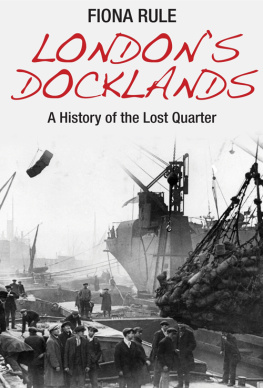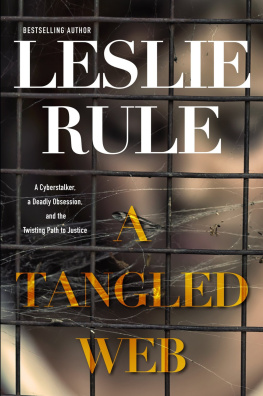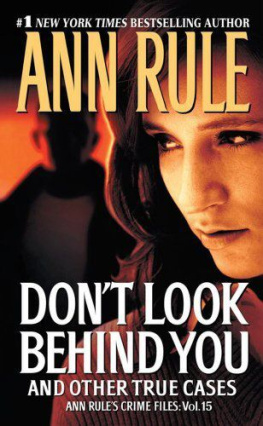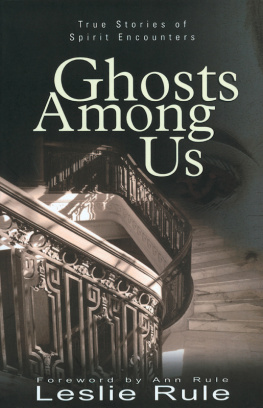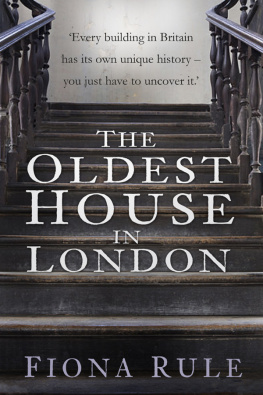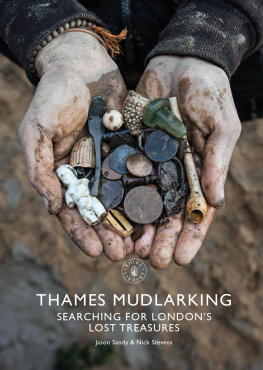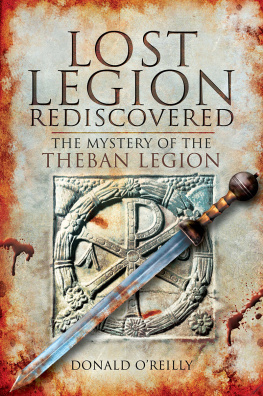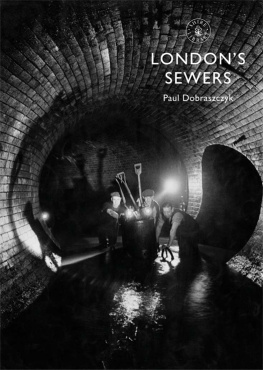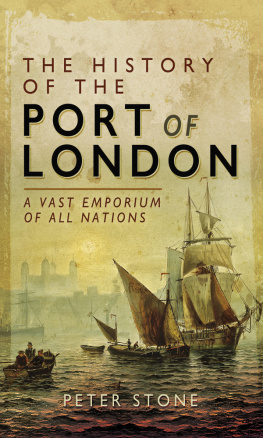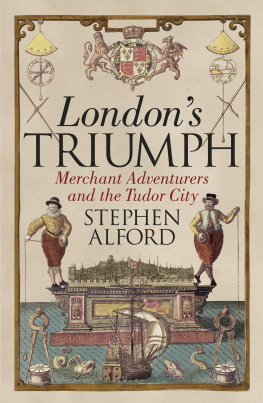Londons Docklands
A History of the Lost Quarter
Londons Docklands
A History of the Lost Quarter
Fiona Rule

First published 2009
ISBN 978 0 7110 3386 3
All rights reserved. No part of this book may be reproduced or transmitted in any form or by any means, electronic or mechanical, including photocopying, recording or by any information storage and retrieval system, without permission from the Publisher in writing.
Fiona Rule 2009
Published by Ian Allan Publishing
An imprint of Ian Allan Publishing Ltd, Hersham, Surrey KT12 4RG.
Printed by Ian Allan Printing Ltd, Hersham, Surrey KT12 4RG.
Code: 0909/C
Visit the Ian Allan Publishing website at www.ianallanpublishing.com
For Harry Mann Thank you for inspiring me.
ACKNOWLEDGEMENTS
I am indebted to the helpful staff at the National Maritime Museum, the Museum in Docklands, the National Archives in Kew, the British Library and the Metropolitan Archives for their assistance with my research. Thanks are also due to Bruce Watson and Lynn Blackmore at the Museum of London for their help in uncovering the lost world of the Hanseatic League.
Special thanks to Dick de Kerbrech, Alan Richardson, Brian Metherell, Brian Powell and, of course, Harry Mann for sharing their personal reminiscences of dock life with me.
Finally, I would like to thank my agent, Sheila Ableman, for her wise advice and support, Catharine and Adrian Edwards for their help with my talks and presentations, Jay Slater, Nick Grant and Sue Frost for their faith in me as a writer and last but by no means least, my husband Robert, for putting up with me.
INTRODUCTION
3 May 1993 brought torrential rain to London and its surrounds. By the time I drove down the industrial lane that led to the front gate of Wood Bros. furniture factory, the road was almost totally submerged under large pools of water, in places over a foot deep. I manoeuvred my car to where I thought the kerb lay, slowly ground to a halt and opened the door to find water lapping at the sill.
The Leas burst its banks again. A tall man with grey hair, whom I would later discover was George the gateman, called across to me. The path to the factory gates was entirely submerged; an inauspicious welcome to the premises of my new employer.
Do you want a piggyback, love? shouted one of a group of men congregated next to George, watching my reaction to my dilemma with macho relish. Cursing the fact that I was wearing a new pair of suede heels but determined not to conform to the female stereotype so hoped for by my masculine audience, I rolled up my trouser legs and waded through the murky water.
It transpired that my watery welcome was not the only surprise I received that day. After squelching into reception and being shown my desk by the sympathetic but amused office manager, I was given a tour of my new workplace by a cheerful chap named Peter, with whom I would be working on marketing campaigns. We toured a line of offices, meeting and shaking hands with people whose names I almost instantly forgot, despite making a concerted effort not to. Finally, Peter led me to a door behind which I could hear an almighty cacophony of machinery whirring, clunking and clacking. In the vast room that lay beyond stood a huge printing press, spewing sheets of paper from its bowels in a steady, rhythmic stream, diligently watched over by a grey-haired man dressed in green overalls who distractedly waved at us as we approached. This is Harry, said Peter. Youll be working with him on the print.
Before walking into Wood Bros. print shop, I knew absolutely nothing about the art of printing and was horrified to learn that I would be responsible for overseeing the production of the multitude of brochures, price lists, posters and advertising flyers that the company dispatched to its retailers. However, Harry proved to be a patient and hugely knowledgeable teacher. As I embarked on my crash course, he taught me much about the complex facets of the process, from selecting paper to how plates were made for the press. However, it was our chats about an entirely different subject that would ultimately lead me on an adventure of discovery into a part of London that has now almost totally vanished.
During our tea breaks, Harry would tell me about his life, which began in September 1934 in West Ham, East London. When he was very young the family moved to Canning Town, an area dominated geographically, economically and socially by three vast expanses of water occupying nearly 250 acres of what had once been Plaistow Marsh.
Known collectively as the Royal Docks, the Victoria, Albert and King George V Docks formed the most visually impressive section of the Port of London; a sprawling network of quays, ancient wharves, deep canals and high-walled basins that stretched along the River Thames from the City to Tilbury. Walking the length of the Victoria and Albert Docks alone would take up to an hour, the total length of these massive bodies of water being over three miles. When constructed in 1880, the Royal Albert was the largest dock in the world, running one and three quarter miles along the north bank of the mighty Thames. At the western edge, a lock connected it with the Royal Victoria Dock, a deep water monster-structure measuring 3,000 feet long by over 1,000 feet wide enough to fit seven football pitches with room to spare. Along its warehouse-lined quayside, enormous jetties, complete with their own railway sidings, stretched out into the centre of the basin, allowing myriad goods from the four corners of the globe to be unloaded onto trucks and conveyed to an increasingly prosperous and consumerist nation.
The London docks provided employment for over 100,000 men and Harrys father and numerous neighbours and friends all worked at the waterside. Work was physically demanding but plentiful and dockworkers pay, while not a kings ransom, was sufficient to raise a family, (albeit in less than idyllic surroundings), and keep a bit back for beer money. Naturally enough, Harry always assumed that the docks would eventually provide him with his own living until a conversation occurred that had a profound effect on the rest of his life. A short time before his fourteenth birthday, the boys father announced that he had secured him an apprenticeship with a local printer. Harry was bewildered by this resolution; why would his Dad eschew Canning Towns major employer in favour of a trade he knew nothing about? His fathers response was remarkably prescient: Theres no future in the Docks, he told his son.
Until Harry told me his story of a lost London community, I knew little about the docks or the people that once lived there. However, a visit to the Royal Victoria Dock showed that his fathers prediction was utterly and undeniably correct. The terrace of the ExCel event centre, built over what was once the Docks North Quay, overlooked a placid expanse of redundant water, used only by the occasional canoeist. Over on the South Quay, a new development of luxury flats sat alongside the long-deserted, empty hulk of Spillers Millennium Mills; a relic of the docks commercial past. Further eastwards, the shimmering glass walls of an empty office block reflected the ripples running across the deserted waters of the Albert Dock. Occasionally, the tranquil atmosphere was interrupted by the engines of a short-haul plane landing on a windswept runway that stretched along the Alberts south quay. To erstwhile residents of Canning Town, many of whom, including Harry, moved northwards to Essex after the war, the scene is as unrecognisable today as it was unimaginable fifty years ago. Intrigued at how evidence of what was until very recently such an integral part of London had been so quickly swept away, I began to explore the history of the area.

